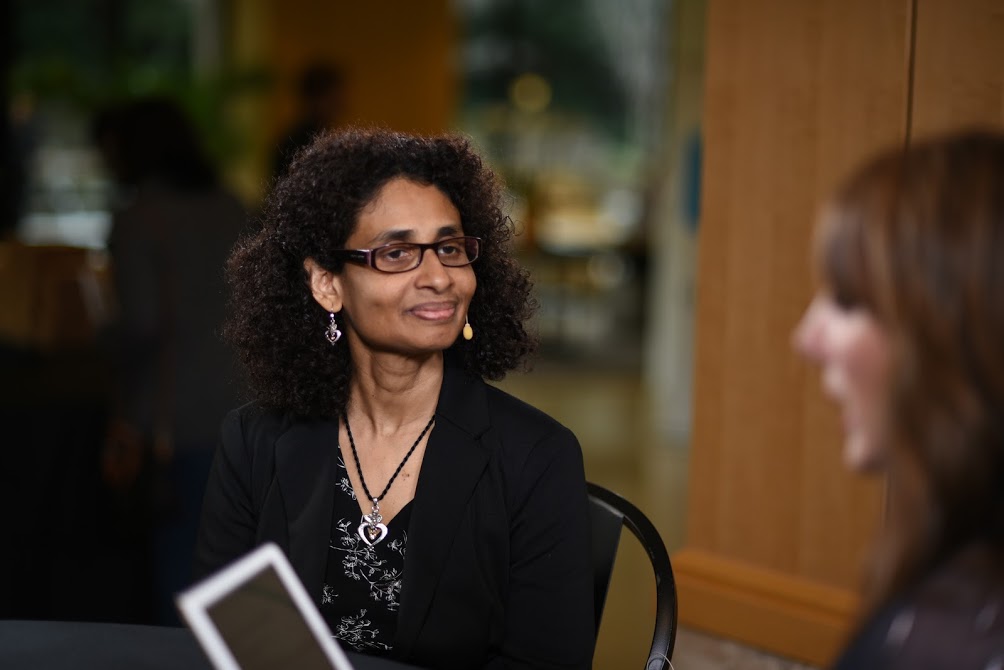 BIG DATA
BIG DATA
 BIG DATA
BIG DATA
 BIG DATA
BIG DATA
As the demand for computer scientists grows, technology companies are taking things into their own hands by fostering the next-generation of innovators. WD, a Western Digital company, is an industrial data powerhouse that encourages a culture of diverse learning cycles for internship programs to help the new guard understand failure and how to learn from it. At the forefront of this education are automation tools, including machine learning and artificial intelligence, and by allowing students to access it in the real world, WD is offering experiences interns could never get in a classroom.
“We treat our interns as a real value add. … They have tremendous access to data so they get to play with all this industry data that they would never get to play with, and they can quickly bring academic background academic learning to that data,” said Janet George (pictured), fellow, chief data officer/scientist/big data/cognitive computing at WD, explaining how her company works with internships and universities to cultivate future data scientist.
“The [data scientist] role has evolved … if you don’t have that business acumen, how do you look at the critical problems, how do you communicate? … Ask the right business questions and understand why that matters,” she stated.
George spoke to Lisa Martin (@Luccazara), co-host of theCUBE, SiliconANGLE’s mobile live streaming studio, at the Stanford Global Women in Data Science Conference at Stanford University to discuss what skills are necessary for today’s computer scientist. (*Disclosure below.)
This week, theCUBE features Janet George as our Guest of the Week.
The WD product line mainly consists of storage solutions. The company is in the business of moving vast amounts of data for its clients. According to George, WD is looking at data in a very different way by applying machine learning and artificial intelligence to garner insights into building storage products. The company is also using failure analysis as a method to use data to improve the lifecycle of its products.
As one would expect with new technology, there needs to be a cultural shift to apply these learnings. “We have invested in our own data, and we said, ‘If we are going to store the world’s data, we need to lead from a data perspective and so [we now] embrace machine learning and artificial intelligence,’” George commented.
Embracing machine learning is imperative because it can scale to manage large quantities of data. However, George believes that machine learning needs a human as well to learn the lessons the data teaching.
“Taking our core domain expertise and using that as training data to build intelligence models that can inform the domain expert to be smart and come up with all the ideas. That is where we [WD] want to be,” George observed.
WD collaborates with universities to develop project-oriented internship programs. George described how the internship programs worked and noted that there is only a six-to-12-week span to encourage learning.
“We take hard research-ended problems or further-out problems and we collaborate with universities, notably Stanford University,” she reported.
She did note that because of the time frame, the one lesson interns discover quickly is that failing fast and learning fast is part of data science.
“I think we have to get to that point where we are comfortable with failure and the learning we get from the failure. Get to negative knowledge and treat that as learning,” George acknowledged.
The program encourages a culture of different learning cycles that takes the insights from the first cycle to help prepare for the second cycle. This approach provides interns with the critical thinking needed to be in the industry.
When asked what the ideal computer scientist is comprised of, George finds it at the intersection of three circles. The first circle is somebody who is very comfortable with data, mathematics, statistics machine learning, etc. “The second circle is the intersection of implementation, engineering … backgrounds where they have discipline and take complex MAP or complex algorithms and actually implement them to get business value,” she responded.
As for the third circle, the intersection is where a scientist is also a business person with the ability to apply the data to a business problem. “So, it’s the intersection of these very diverse disciplines and someone who has deep critical thinking and never gives up” is how George summed up her idea of the model computer scientist.
The data scientist will also need to use their business skills to help alleviate the fear in the industry that machine learning will take away jobs. George recognizes that new technology will disrupt markets in a major way, but it will also bring about a shift in thinking.
“When technology becomes your partner and technology becomes your ally, when it actually becomes useful to you, there’s a shift in culture. So, we say, ‘How do we earn the value of the humans?’ [We will] discover new things for you that will create a ‘wow factor,’ and when it does, you will want more of it,” stated George.
She concluded by adding that humans have an enormous creative capacity and that technology is just simply a part of our evolution.
Watch the complete video interview, and be sure to check out more of SiliconANGLE and theCUBE’s coverage of the Stanford Global Women in Data Science (WiDS) Conference. (*Disclosure: TheCUBE is a media partner at the conference. Neither Stanford nor other sponsors have editorial control over content on theCUBE or SiliconANGLE.)
THANK YOU